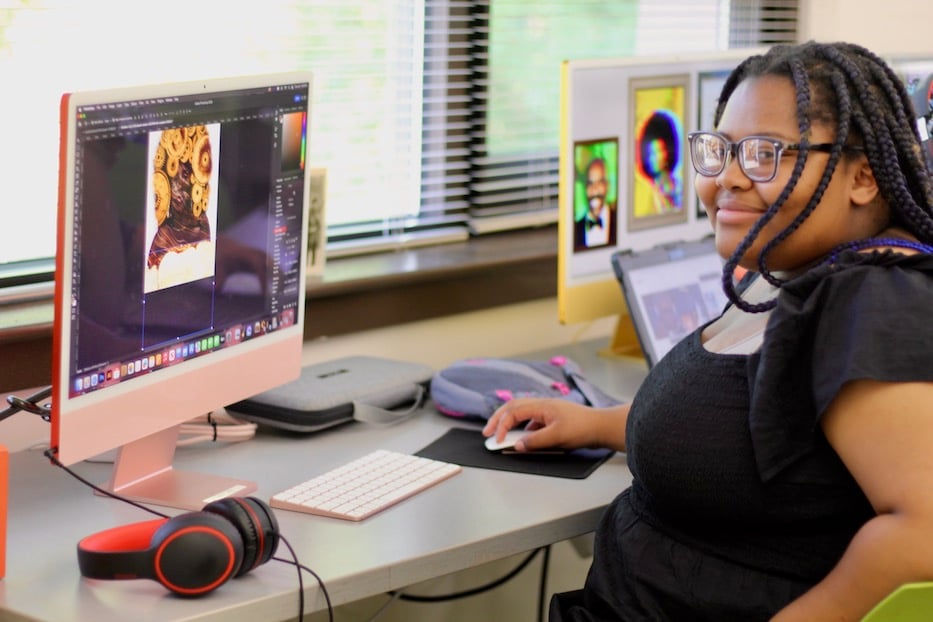
Saria Reid, who has done programs at ConnCAT for six years. Lucy Gellman Photos.
Saria Reid traced the contours of a woman’s face in Photoshop, replacing her Afro with a series of glowing, bronze mechanical gears. To a single layer of color, she added another, and then a third. She studied the profile, marbling the woman’s skin until it undulated in waves of brown. By the time she finished, the gears looked as if they were blooming one atop the other, part-machine and part-marigold.
Six months ago, the same artwork would have taken her close to half an hour, with stops and starts to wait for a computer on its last legs. Now, it’s done within minutes.
A rising senior at New Haven Academy, Reid is one of dozens of students celebrating new technology at the Connecticut Center for Arts & Technology (ConnCAT), where the organization has been able to upgrade its computers for the first time in a decade. Just a month after the organization opened two new computer labs, students are finding what a difference it makes to use equipment that has kept up with an organization’s pace of academic and artistic growth.
The long-needed tech boost come from a $91,000 operating support grant from CT Humanities, which started the Connecticut Cultural Fund in 2021 as a way to help organizations bounce back from the Covid-19 pandemic. This year, ConnCAT was one of over three dozen New Haven area recipients that the fund supported. Other recipients (read a full list here) include CT Folk, MakeHaven, Monk Youth Jazz and STEAM Collective, A Broken Umbrella Theatre and the Jewish Historical Society of Greater New Haven.
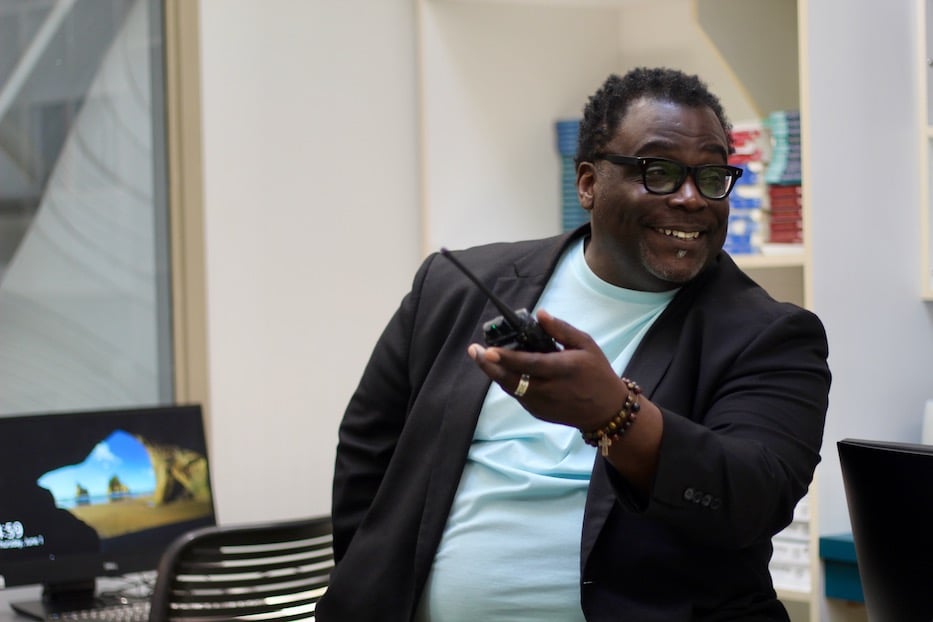
Director of Programs Steve Driffin in the new PC computer lab, which is for adult students.
“Technology changes in a nanosecond,” said Director of Programs Steve Driffin, who has spent the last months applying for, waiting on and implementing the grant as he designs ConnCAT’s summer youth program around the 50th anniversary of hip hop. “Here we were with all these dead computers, calling ourselves the Connecticut Center for Arts and Technology.”
In that sense, Driffin said, the story starts in both 2012 and in the fall of last year, when he spotted the grant and decided to go for it. When ConnCAT initially opened in 2012, all of its technology was brand new, as were its ceiling-shattering programs in phlebotomy and medical billing and coding. By that summer, it had added youth programming that leaned on photo and audio editing in the heart of Science Park.
For a while, the computers ran like clockwork. Meanwhile, ConnCAT grew. People learned about its route to job creation and after-school programming for youth. It added a program in culinary arts and a glistening new space to match it. It. As word about the new organization and its mission spread, more New Haveners found the way to its front door, and came in hoping to start the next professional chapter of their life.
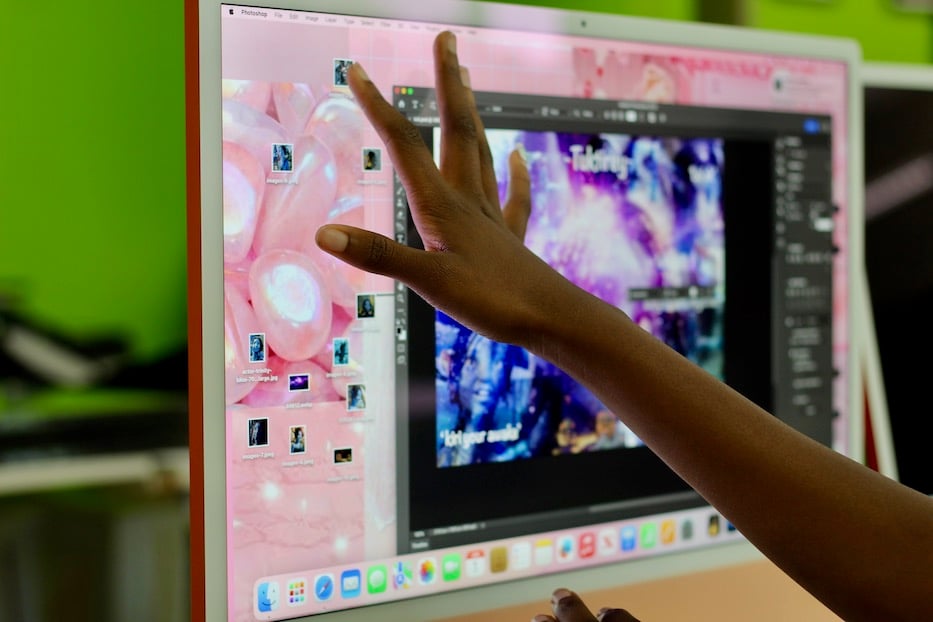

But as more students found ConnCAT, the technology stopped keeping up. “They [the computers] started dying one by one,” Driffin remembered. The first to go were the machines that adult students relied on for everything from introductory lessons in medical billing to final assessments in phlebotomy. “It ultimately became a graveyard, and we couldn’t do anything about it.”
Meanwhile, he could see that the Macs, which younger students relied on for audio editing, creative work and the occasional online game, were also beginning to slow down. He took a deep breath and hoped they had a few more years of life left in them.
“We just made it work,” he remembered. He credited art teachers Cody Norris and Jasmine Powell, who taught in last year’s Motown-centric summer program, for holding it down on equipment that frequently froze and turned out tiny, pixelated images when it tried to do too much, too fast. “Everyone knew we needed new technology, but where do you get the resources for something like that?”
The answer, it turned out, was CT Humanities, which started the Connecticut Cultural Fund with an overall $30.7 million in federal relief funding in fall 2021. When Driffin spotted an open grant last fall, “I felt strongly that we could get this,” he said. Development isn’t in his job description, he said, but “this is just what we do in the nonprofit world.”
He praised Opal Harmon, director of HR and operations at ConnCAT, for jumping onto the project with him. By late last fall, they had developed a budget of $100,000 for new technology, of which they ultimately received 90 percent.
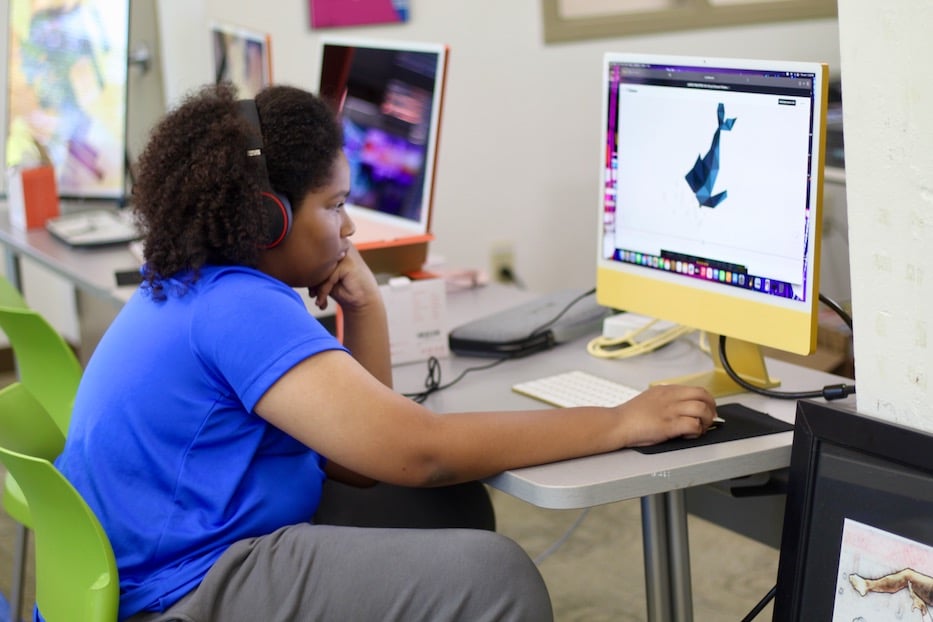
Student Lynx Britt.
The two turned the grant in in November, right around ConnCAT’s annual gratitude dinner, then waited. Driffin was in North Carolina visiting family for the holidays when he opened an email announcing that the organization had gotten the grant. He remembered being in the parking lot of a restaurant with his siblings, and whooping for joy. He later told his colleagues that Christmas had come early for ConnCAT.
In January, he and Youth Program Assistant Rachel Graziano began clearing out the dead computers, dropping them by the truckload at Staples stores in Hamden and along the Boston Post Road. They made their technological wish list, and began to order and install new equipment that includes two new computer labs and a new printer for student photography.
Several months and two brand-new computer labs later, Driffin said, the difference is like night and day. Adult students can do their work without worrying that the computer might quit in the middle of a task or academic exercise. Youth, meanwhile, can fully dive into the artmaking that is a core part of after-school and summer programming. Within days, they were experimenting on the new machines. .
“The work that they have already created is like lightyears ahead,” Driffin said.
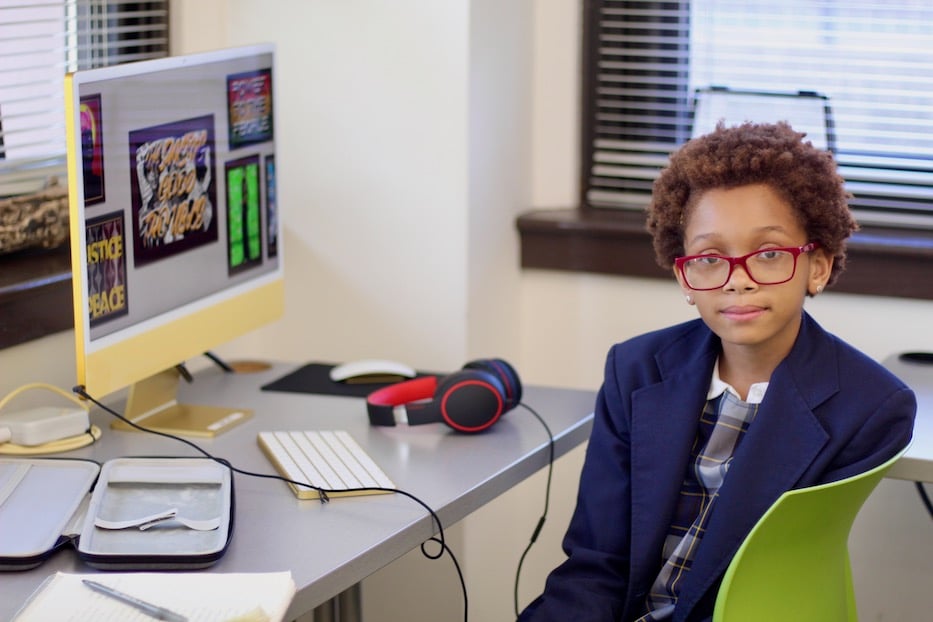
Samara Dae Mayes.
On a recent Thursday, nowhere was that clearer than in the Mac lab itself, as students worked diligently on art and music projects before their parents picked them up for the day. In one corner, 10-year-old Samara Dae Mayes listened to music, finding a vibe before putting the finishing touches on a self-portrait that she was doing in Photoshop. Over the doorway at her back, a sign cheerily read “It’s A Great Day To Create!”
When asked, she said that the new computers have already made a significant difference in her artwork. Before Driffin changed out the equipment, “the computers were really slow and they couldn’t take a lot of stuff,” she said. She can still remember the moment when the computer was suddenly able to keep up with the vision she had for her artwork.
That was also true for Savannah Tamia Nash, a sixth grader at Dunbar Hill Elementary School who has been in ConnCAT’s youth enrichment programs for two years. This year, she wanted to get one step closer to her dream of working on and scoring animated films. On the old Mac computers, “they would become very slow and unresponsive,” sometimes freezing when asked to do basic tasks.
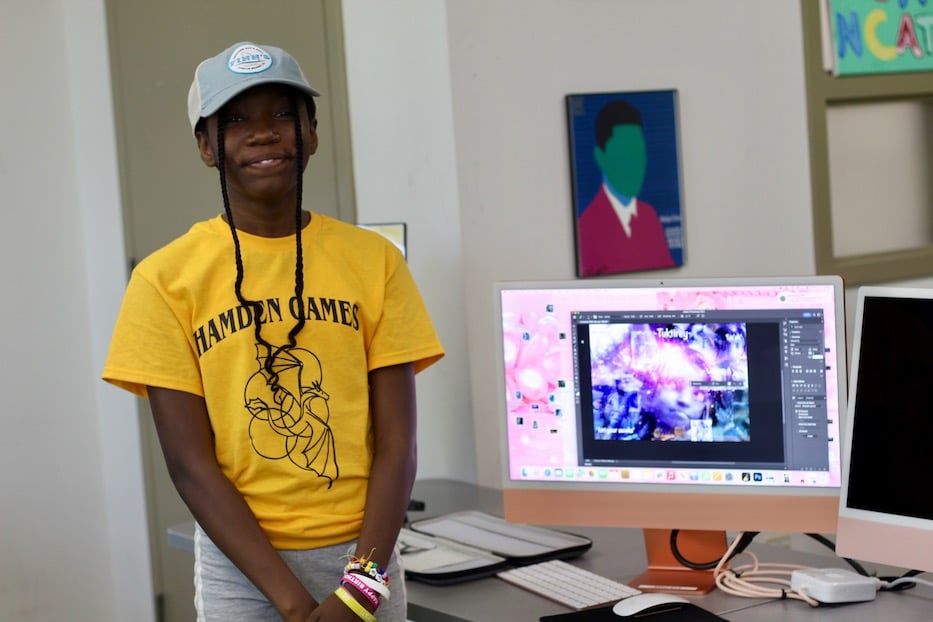
Savannah Tamia Nash.
Now, she’s able to work quickly, which has given her more time to think about the music she wants to make, a genre she described as “Renaissance-inspired lo fi.” As she pulled up a sample done in Garageband, gentle strings filled the room, as if someone had pulled out a harp and begun to strum. Images of the Avatar character Tuktirey te Suli Neytiri'ite filled the screen, their face a starburst of light.
“It’s really fun,” she said, adding that the new art she’s able to do feels of a piece with ConnCAT’s work and mission. “You can express yourself in ways that you can’t do in other places or other settings.”
Norris, who will be teaching this summer, said he’s excited for a summer of possibility. As he chatted with Savannah and fellow student Lynx Britt, he peeked at Reid’s work, which fuses portraiture of Black women with images of old machinery.
Reid, who has been at ConnCAT for six years, said she started thinking about the juxtaposition of the two when she was learning about Afrofuturism.
“I just like to do it because it’s fun,” she said. “It gives me a space to express whatever I’m feeling.”
She watched the computer respond instantly to every click, every command, every new layer of color. “And it’s actually really nice that I don’t have to wait five minutes for it to transform.”